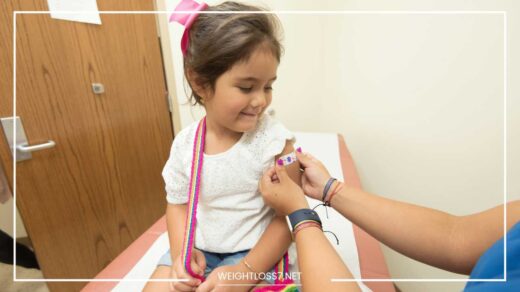Healthy Teeth, Happy You: Ultimate Oral Care Guide

Healthy Teeth
Shining Smile, Healthy You: A Guide to Lifelong Dental Wellness
We’ve covered the fundamentals of oral hygiene, but maintaining a healthy smile is a multifaceted endeavor. Here’s how we can further expand your knowledge and empower you to achieve optimal dental well-being.
Understanding Your Teeth: From Enamel to Dentin
Let’s take a deeper dive into the anatomy of a tooth:
- Enamel: The hard, white outer layer acts as the first line of defense against decay. It’s the most mineralized substance in the human body, but it can still erode due to poor oral hygiene, acidic foods, and aggressive brushing.
- Dentin: Beneath the enamel lies a softer, yellow tissue called dentin. It contains microscopic tubules that can transmit sensitivity when exposed, causing discomfort from hot, cold, or sweet foods and drinks.
- Pulp: The innermost layer, known as the pulp, houses nerves, blood vessels, and connective tissues. It plays a crucial role in tooth development and sensation.
- Cementum: This hard, bone-like layer covers the root of the tooth and anchors it within the jawbone.
- Periodontal Ligament: This network of fibers connects the tooth socket to the jawbone, providing support and stability to your teeth.
Knowing the different parts of a tooth helps us appreciate their vulnerability and the importance of a holistic approach to dental care.
Beyond Plaque: Additional Threats to Oral Health
While plaque is a major dental foe, other factors can compromise your oral health:
- Dry Mouth: A condition where the mouth doesn’t produce enough saliva. Saliva plays a vital role in washing away food particles, neutralizing acids, and protecting teeth from decay. Dry mouth can be caused by certain medications, medical conditions, and even aging.
- Gum Disease (Periodontitis): If left untreated, gingivitis (inflammation of the gums) can progress to periodontitis. This severe gum disease weakens the bone and tissues supporting your teeth, ultimately leading to tooth loss.
- Bruxism (Teeth Grinding): Involuntary teeth grinding or clenching during sleep can damage teeth, cause headaches and jaw pain. Stress, certain medications, and even misaligned teeth can contribute to bruxism.
- Oral Cancer: Early detection is crucial for successful oral cancer treatment. Regular dental checkups allow dentists to screen for any suspicious lesions in the mouth and throat.
Building a Strong Foundation: Early Dental Care for Children
Establishing healthy dental habits early on sets the stage for lifelong oral well-being. Here are some tips for promoting good oral hygiene in children:
- Start Early: As soon as the first tooth erupts (around 6 months), gently clean the baby’s gums with a soft, damp washcloth after feedings.
- Teething Troubles: Use a cool teething ring or a chilled (not frozen) washcloth to soothe discomfort.
- Introduce Brushing: Around 1 year old, start using a child-sized toothbrush with a tiny amount of fluoride toothpaste. Supervise brushing sessions until children can brush effectively on their own (around age 6-8).
- Flossing Fun: Once children have teeth that touch (around age 2-3), demonstrate and guide them on flossing techniques.
- Make it a Positive Experience: Use colorful toothbrushes, fun toothpaste flavors, and sing songs while brushing to make it enjoyable for children.
- Regular Dental Visits: Take your child to the dentist for their first check-up by their first birthday or within 6 months of their first tooth erupting.
Special Considerations: Tailoring Your Oral Hygiene Routine
Dental needs can vary depending on age, overall health, and any existing conditions. Here are some specific needs to consider:
- Pregnancy: Hormonal changes during pregnancy can increase the risk of gingivitis. Schedule regular checkups with your dentist and maintain a meticulous oral hygiene routine.
- Diabetes: People with diabetes are more susceptible to gum disease and infections. Strict blood sugar control and meticulous oral hygiene are crucial.
- Dry Mouth: Consult your dentist for solutions to manage dry mouth, like using a sugar-free mouthwash or increasing water intake.
- Dentures and Implants: Even with dentures or implants, regular cleaning and maintenance are essential to prevent gum inflammation and ensure a good fit.
The Power of Technology: Innovative Tools for Oral Care
Technology continues to revolutionize oral care. Here are some advancements worth exploring:
- Electric Toothbrushes: Studies suggest electric toothbrushes can be slightly more effective at removing plaque than manual brushes, especially for those with dexterity issues.
- Sonic Toothbrushes: These use sonic technology to create vibrations that dislodge plaque and debris.
- Water Flossers: Offer a convenient and effective alternative to traditional flossing, using a pressurized water stream to clean between teeth.
- Dental Apps: Provide educational resources, track brushing habits, and even offer coaching and feedback for better technique.
- Teledentistry: Allows for virtual consultations with dentists, making dental care more accessible for those in remote areas or with limited mobility.
The Future of Dentistry: Minimally Invasive and Personalized Care
The future of dentistry is bright, with a focus on minimally invasive treatments and personalized care. Here’s a glimpse into what’s on the horizon:
- Regenerative Dentistry: This exciting field explores the potential to regenerate damaged tooth tissues, potentially eliminating the need for root canals and fillings in the future.
- Biocompatible Materials: Advancements in biomaterials are leading to the development of tooth fillings and implants that are more natural-looking and biocompatible, minimizing rejection risks.
- Personalized Medicine: Genetic testing may one day help tailor dental care plans to individual needs and susceptibility to specific oral health issues.
Final Word: A Smile that Lasts a Lifetime
By understanding your oral anatomy, adopting a consistent oral hygiene routine, and embracing preventive measures, you can achieve and maintain a healthy smile that radiates confidence.
Remember, a healthy mouth is not just about aesthetics; it’s an essential part of overall well-being.
Schedule regular dental checkups, embrace new technologies, and make informed dietary choices. With dedication and the right tools, you can empower yourself to enjoy a lifetime of dental health.
Bonus Section: Fun Facts and Brushing Hacks
- The average person brushes their teeth for only about 46 seconds, falling short of the recommended two minutes.
- The human mouth contains around 600 different types of bacteria.
- The strongest muscle in the human body, relative to its size, is the masseter muscle, responsible for clenching the jaw.
- Contrary to popular belief, sugar doesn’t directly cause cavities; it’s the acid produced by bacteria feeding on sugar that erodes tooth enamel.
Brushing Hacks:
- Divide your mouth into four sections (upper right, upper left, lower right, lower left) and spend 30 seconds brushing each section thoroughly.
- Use an angled brushing motion to clean both the front and back surfaces of your teeth.
- Don’t forget to gently brush your tongue to remove bacteria and freshen breath.
By incorporating these tips and maintaining a healthy oral hygiene routine, you can ensure a bright, healthy smile that reflects your overall well-being.
Shining Smile, Healthy You: A Guide to Lifelong Dental Wellness
Building healthy dental habits can be a fun and engaging experience, especially for children. Here are some creative activities and resources to make oral care enjoyable and informative:
Engaging Activities for Children:
- Brushing Games: Create a two-minute timer decorated with their favorite characters. Play a song or story for two minutes while they brush.
- DIY Flossing Fun: Let them decorate a floss container with stickers or markers. Practice flossing on a doll or toy model to demonstrate the technique.
- Healthy Snack Scavenger Hunt: Hide healthy snacks like fruits, vegetables, and cheese around the house and let them search for them.
- Coloring Pages and Activities: Download or print coloring pages featuring teeth and dental hygiene routines.
- Educational Apps: Explore interactive apps that teach children about oral health in a fun and engaging way.
Additional Resources for All Ages:
- American Dental Association (ADA): https://www.ada.org/ – The ADA is a wealth of information on all aspects of oral health, with resources for patients, professionals, and educators.
- National Institute of Dental and Craniofacial Research (NIDCR): https://www.nidcr.nih.gov/ – Part of the National Institutes of Health, the NIDCR conducts research and provides educational resources on dental, oral, and craniofacial health.
- Dental Hygiene Schools: Many dental hygiene schools offer community outreach programs and educational sessions on proper oral hygiene techniques. Consider contacting a local school to see if they offer such programs.
Maintaining a Healthy Smile: Beyond Brushing and Flossing
While brushing and flossing are the cornerstones of good oral hygiene, here are some additional practices to consider:
- Regular Dental Checkups and Cleanings: Schedule regular dental checkups and cleanings, typically every six months, to identify and address any potential issues early on.
- Mouthwash: While not a substitute for brushing and flossing, a fluoride mouthwash can be a helpful addition to your oral hygiene routine. Look for a mouthwash with the ADA Seal of Acceptance.
- Diet: Be mindful of your diet and limit sugary drinks and processed foods. Opt for water, fruits, vegetables, and calcium-rich foods to promote oral health.
- Chewing Sugar-Free Gum: Sugar-free gum can stimulate saliva production and help freshen breath, but remember, it’s not a replacement for brushing and flossing.
Addressing Common Concerns: Sensitive Teeth and Bad Breath
- Sensitive Teeth: If you experience tooth sensitivity, consider using a toothpaste formulated for sensitive teeth. Consult your dentist to determine the underlying cause and explore treatment options.
- Bad Breath (Halitosis): Persistent bad breath could indicate underlying oral health issues or other medical conditions. Practice good oral hygiene, stay hydrated, and consult your dentist if bad breath persists.
Final Word: A Smile that Speaks Volumes
A healthy smile does more than just boost your confidence; it reflects your overall well-being. By incorporating the tips and strategies outlined in this guide, you can cultivate a lifetime of optimal oral health.
Remember, consistency is key. Make healthy habits a routine, embrace preventive measures, and celebrate the power of your smile!
Disclaimer: This blog post is for informational purposes only and should not be a substitute for professional medical advice. Always consult with a qualified healthcare professional or dentist regarding any questions or concerns you may have about your oral health.

















